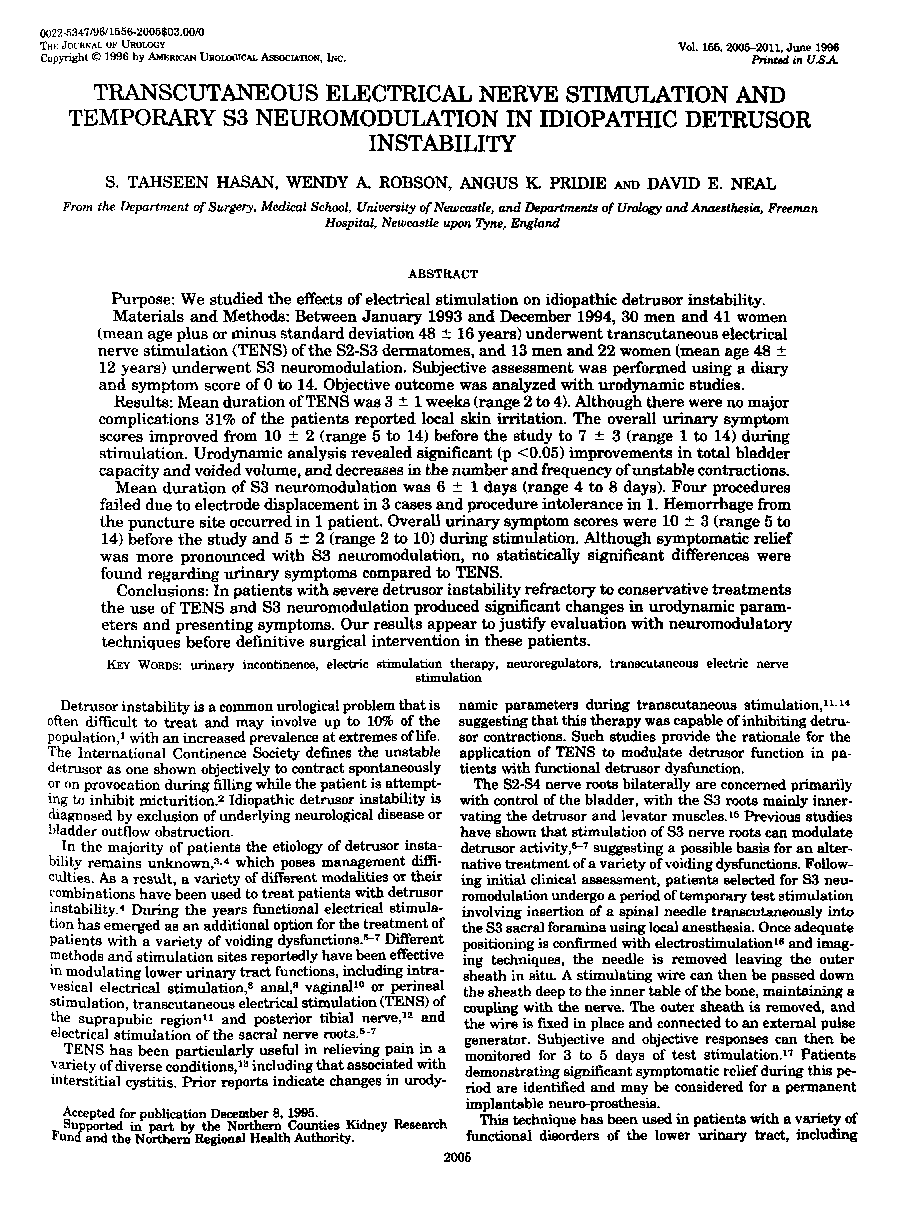| کد مقاله | کد نشریه | سال انتشار | مقاله انگلیسی | نسخه تمام متن |
|---|---|---|---|---|
| 3882767 | 1249343 | 2011 | 7 صفحه PDF | دانلود رایگان |

PurposeWe studied the effects of electrical stimulation on idiopathic detrusor instability.Materials and MethodsBetween January 1993 and December 1994, 30 men and 41 women (mean age plus or minus standard deviation 48 plus/minus 16 years) underwent transcutaneous electrical nerve stimulation (TENS) of the S2-S3 dermatomes, and 13 men and 22 women (mean age 48 plus/minus 12 years) underwent S3 neuromodulation. Subjective assessment was performed using a diary and symptom score of 0 to 14. Objective outcome was analyzed with urodynamic studies.ResultsMean duration of TENS was 3 plus/minus 1 weeks (range 2 to 4). Although there were no major complications 31 percent of the patients reported local skin irritation. The overall urinary symptom scores improved from 10 plus/minus 2 (range 5 to 14) before the study to 7 plus/minus 3 (range 1 to 14) during stimulation. Urodynamic analysis revealed significant (p less than 0.05) improvements in total bladder capacity and voided volume, and decreases in the number and frequency of unstable contractions.Mean duration of S3 neuromodulation was 6 plus/minus 1 days (range 4 to 8 days). Four procedures failed due to electrode displacement in 3 cases and procedure intolerance in 1. Hemorrhage from the puncture site occurred in 1 patient. Overall urinary symptom scores were 10 plus/minus 3 (range 5 to 14) before the study and 5 plus/minus 2 (range 2 to 10) during stimulation. Although symptomatic relief was more pronounced with S3 neuromodulation, no statistically significant differences were found regarding urinary symptoms compared to TENS.ConclusionsIn patients with severe detrusor instability refractory to conservative treatments the use of TENS and S3 neuromodulation produced significant changes in urodynamic parameters and presenting symptoms. Our results appear to justify evaluation with neuromodulatory techniques before definitive surgical intervention in these patients.
Journal: The Journal of Urology - Volume 155, Issue 6, June 1996, Pages 2005–2011